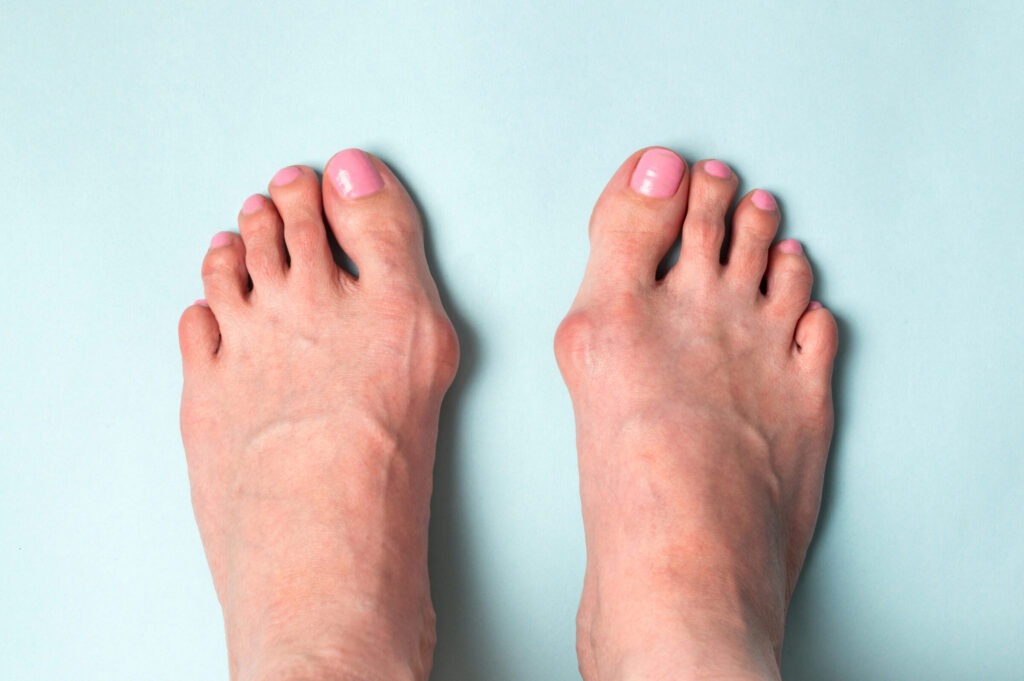Bunions are one of the most common foot conditions we treat at South Dublin Podiatry. If you’ve noticed a bony bump forming at the base of your big toe, or if you experience pain or discomfort in that area, especially when walking or wearing shoes, you may be dealing with a bunion.
Let’s explore what bunions are, why they form, and how custom orthotics can be an effective, non-surgical solution to manage the discomfort and help slow their progression.
What Is a Bunion?
A bunion, medically known as hallux valgus, is a deformity of the joint at the base of the big toe. It occurs when the first metatarsal bone shifts outward while the big toe drifts toward the second toe. Over time, this misalignment causes a visible bump on the side of the foot and can lead to symptoms such as:
- Pain and tenderness near the big toe joint
- Redness and swelling
- Corns or calluses where toes overlap
- Restricted movement of the big toe
- Difficulty finding comfortable footwear
Bunions can result from a combination of genetics, foot structure, and external factors such as tight or narrow shoes. They’re especially common in people with flat feet or abnormal walking patterns.
How Orthotics Help with Bunions
While bunions won’t go away without surgery, custom orthotics can be a highly effective way to manage symptoms and slow further joint damage. Here’s how:
1. Improved Alignment and Support
Orthotics are custom-made inserts that support the foot’s natural structure. For bunion sufferers, they help redistribute pressure away from the affected joint and encourage proper toe alignment. This reduces strain and can alleviate daily pain.
2. Reduced Inflammation and Friction
By minimising abnormal motion in the foot, orthotics help reduce the rubbing and irritation that causes redness, swelling, and calluses. They also make shoes fit more comfortably, which can significantly improve your quality of life.
3. Slowing Bunion Progression
Orthotics are particularly valuable in the early stages of bunion development. By correcting biomechanical issues, such as overpronation, they help prevent the condition from worsening, potentially reducing the need for surgery down the road.
4. Customised for Your Feet
Unlike over-the-counter insoles, custom orthotics are tailored to your unique foot shape and walking style. After a thorough biomechanical assessment, your podiatrist will design orthotics to address your specific needs and goals.
When to See a Podiatrist
If you have a bunion that’s causing discomfort, don’t wait for it to get worse. Early intervention can make a big difference. A podiatrist can evaluate the severity of your bunion and recommend a treatment plan, which may include:
- Custom orthotics
- Padding or taping
- Footwear recommendations
- Physical therapy exercises
- Monitoring for signs that surgical intervention may be needed
Bunions don’t have to keep you from doing the things you love. With the right support, you can stay active, reduce pain, and prevent long-term complications.
Schedule an appointment today to find out how custom orthotics can help you live more comfortably with bunions.
If you are concerned about your feet, please call us on 01-9012009 or fill out the form below.

